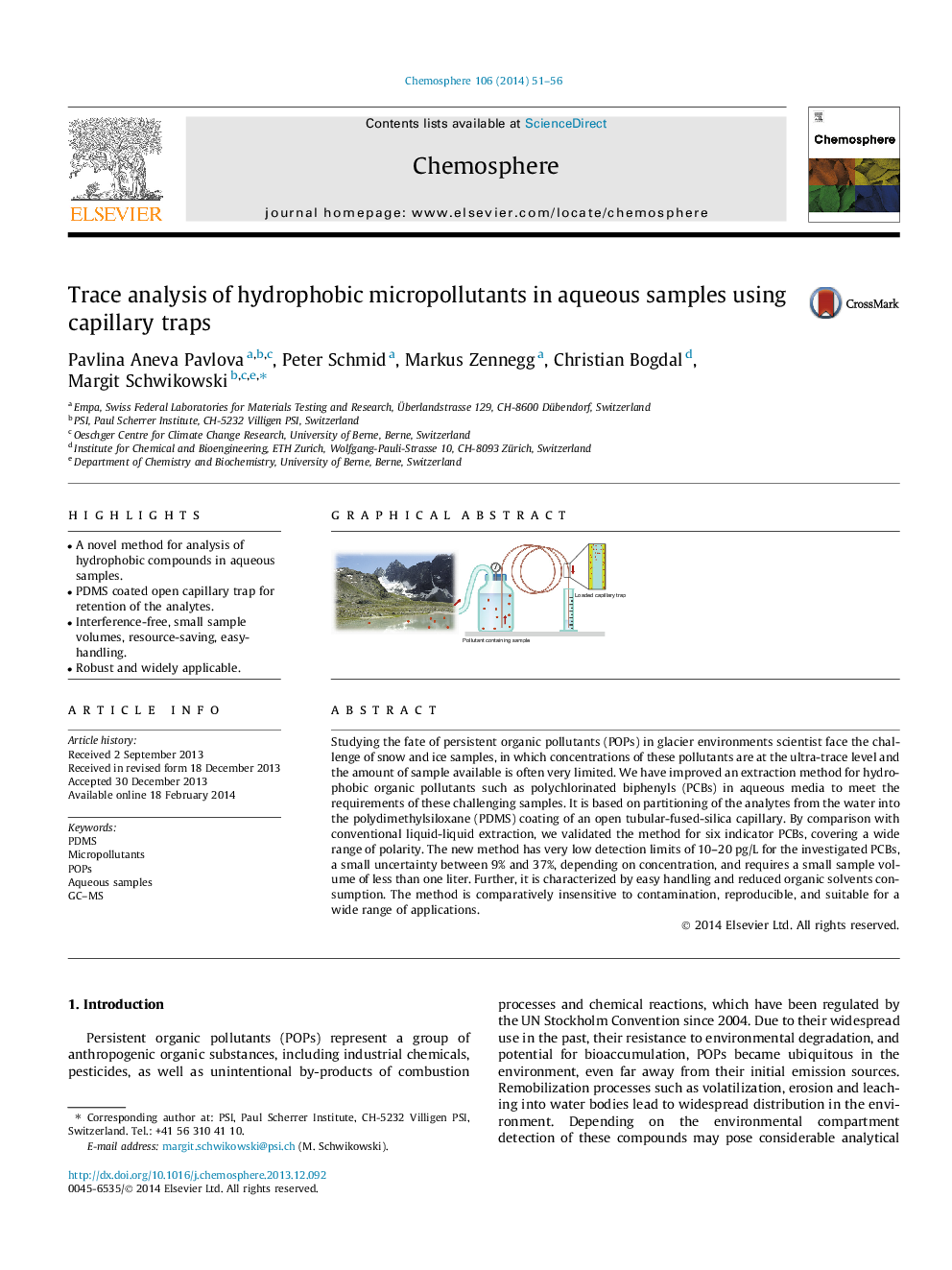| Article ID | Journal | Published Year | Pages | File Type |
|---|---|---|---|---|
| 4408804 | Chemosphere | 2014 | 6 Pages |
•A novel method for analysis of hydrophobic compounds in aqueous samples.•PDMS coated open capillary trap for retention of the analytes.•Interference-free, small sample volumes, resource-saving, easy-handling.•Robust and widely applicable.
Studying the fate of persistent organic pollutants (POPs) in glacier environments scientist face the challenge of snow and ice samples, in which concentrations of these pollutants are at the ultra-trace level and the amount of sample available is often very limited. We have improved an extraction method for hydrophobic organic pollutants such as polychlorinated biphenyls (PCBs) in aqueous media to meet the requirements of these challenging samples. It is based on partitioning of the analytes from the water into the polydimethylsiloxane (PDMS) coating of an open tubular-fused-silica capillary. By comparison with conventional liquid-liquid extraction, we validated the method for six indicator PCBs, covering a wide range of polarity. The new method has very low detection limits of 10–20 pg/L for the investigated PCBs, a small uncertainty between 9% and 37%, depending on concentration, and requires a small sample volume of less than one liter. Further, it is characterized by easy handling and reduced organic solvents consumption. The method is comparatively insensitive to contamination, reproducible, and suitable for a wide range of applications.
Graphical abstractFigure optionsDownload full-size imageDownload as PowerPoint slide
